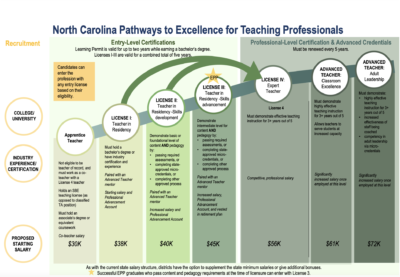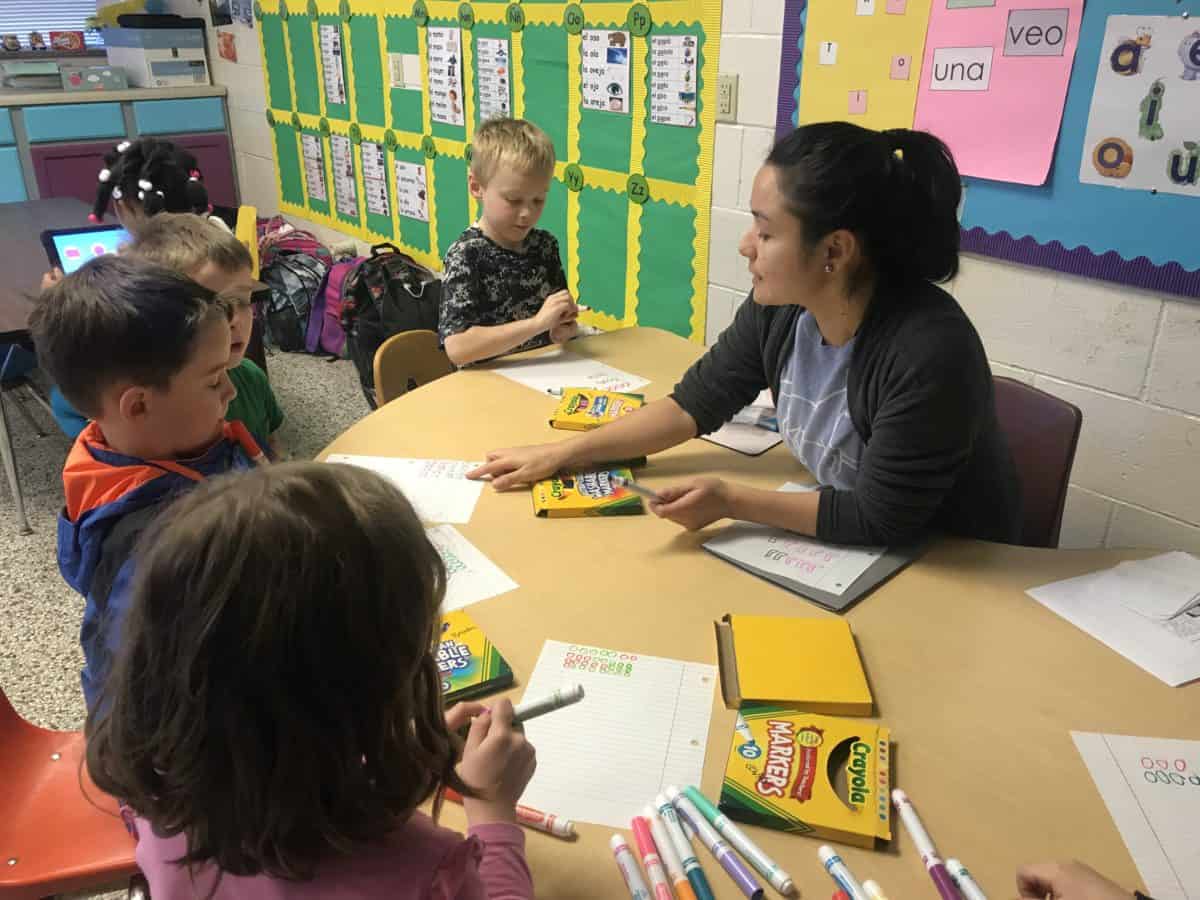
Share this story
- The State Board of Education had a chance to weigh in on a proposed licensure reform model that could mean more money for teachers but would also radically restructure the way licensure works. #nced
- The proposed licensure reform model is “saying teachers are primarily charged with two things ... they help students learn, and they help teachers become great teachers," Tom Tomberlin from DPI told the State Board of Education. #nced
|
|
State Board of Education members had a lot of questions at their meeting on April 6 about a draft teacher licensure model being taken up by the Professional Educator Preparation & Standards Commission (PEPSC).
Tom Tomberlin, director of educator recruitment and support at the state Department of Public Instruction (DPI), stressed to the Board that the model presented at the meeting was a work in progress.
“I need to strongly reiterate that this is not in any way the final model,” he told them. “This is not a model we are asking you to vote on.”
The draft contains multiple levels at which educators can teach, beginning at apprentice and progressing on to expert and advanced teaching roles that come with additional responsibility and compensation above what the state pays today. Higher levels can be reached by fulfilling certain requirements, including demonstrating effectiveness.
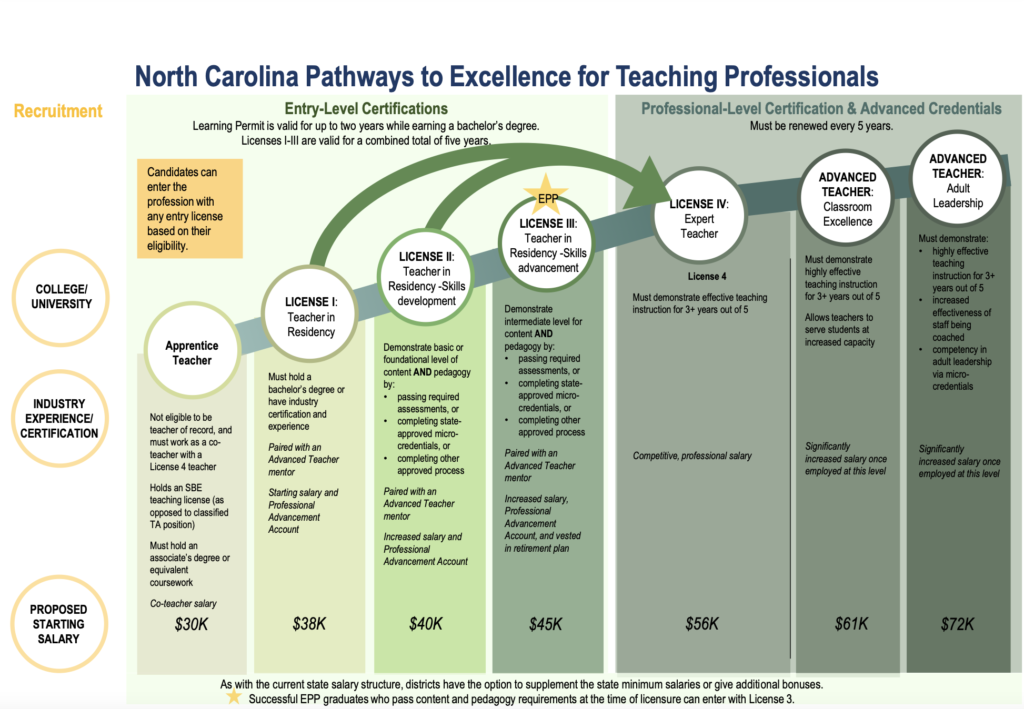
Board members spent a lot of time discussing how teachers can demonstrate effectiveness.
“I think in education … there is a thinking that merit pay means tying teacher compensation to test scores,” state Superintendent of Public Instruction Catherine Truitt said. “I want to be very clear that this is not a model that ties teacher compensation to test scores.
“While EVAAS could be one way to move up in the model … it is one way. There are multiple ways for teachers to move up,” she said, referring to the Education Value-Added Assessment System.
For instance, looking at license II, in contrast to how teachers are evaluated today, there are multiple options for measuring effectiveness, including tests, micro-credentials, and Practical Educator Evidence Review.

And multiple evaluation options continue to be available at higher levels. You can see in a slide a few paragraphs down the requirements for a level III teacher.
Truitt noted that license III is the area where most new teachers are expected to fall. The majority of teachers in the state are trained in the state’s Educator Preparation Programs, and those teachers are expected to enter the profession at license III making $45,000.
“Their starting salary, if we have our way, will be higher than it is right now,” Truitt said.
Currently, the same teacher would start out at about $35,000.
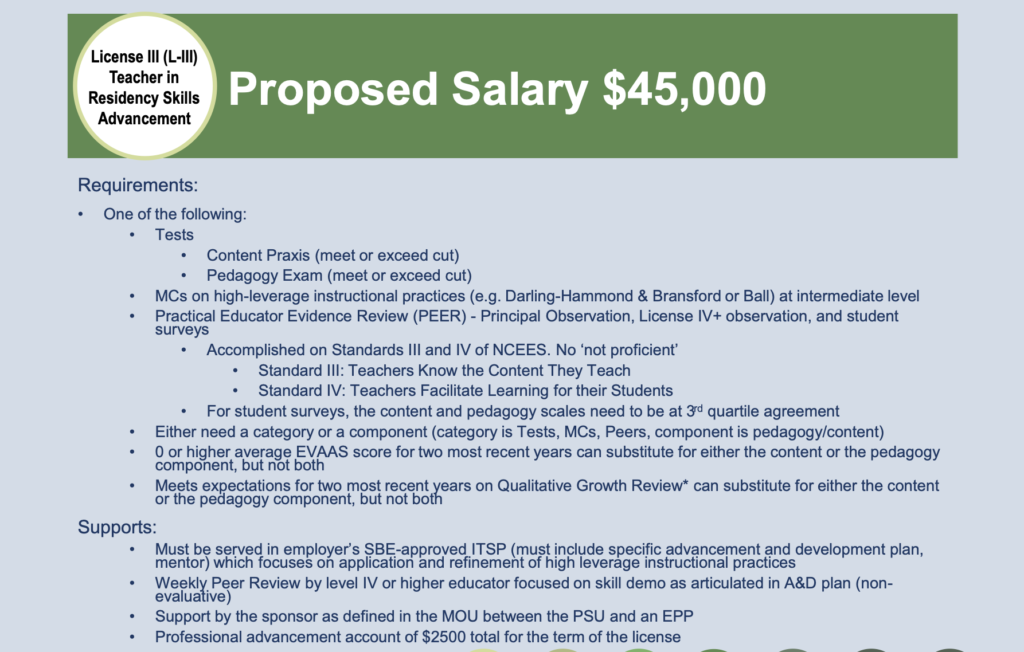
Truitt cautioned Board members to keep in mind how models like this are viewed by teachers.
“Teachers, when they look at this, are only really looking at ‘How does this impact my place in the school now?’ And rightly so. That is what they should be looking at,” she said.
Truitt said the view of models such as these from Board members is far different than it is for teachers on the ground. She also said that even if the model were approved, the changes wouldn’t go into effect for two to three years.
Board member Jill Camnitz referenced the numerous emails she said State Board members are getting from people who say this model amounts to merit pay. She asked Tomberlin to weigh in.
Tomberlin said that merit pay has been tried in North Carolina before, but it didn’t fundamentally change the organizational structure of schools or teacher compensation systems.
The draft model is attempting to do that, he said.
“It’s saying teachers are primarily charged with two things … they help students learn, and they help teachers become great teachers,” he said.
Tomberlin said if the compensation system in the state aligns with those goals, it would be a big change for the structure of education in North Carolina.
“That has never happened before,” he said.
Board member Amy White also brought up requirements that teachers at higher levels mentor teachers at lower levels. She said that is a monumental responsibility, and there needs to be more discussion about who mentors whom and how they are trained.
This model came originally from the North Carolina Education Human Capital Roundtable before being passed along to PEPSC for public work. Currently, the model is being refined and considered in subcommittees of PEPSC.
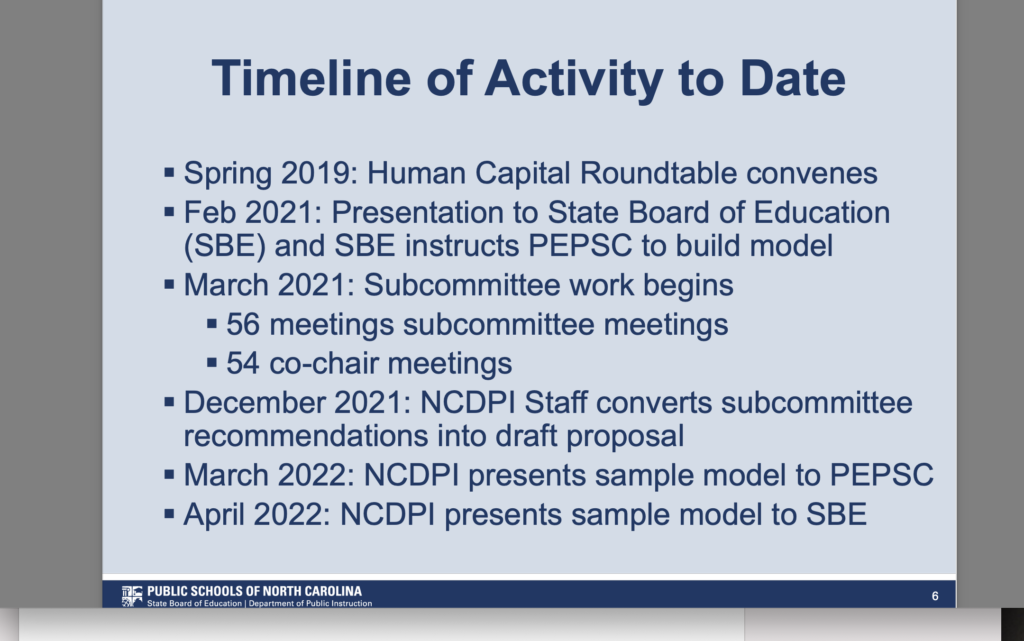
After the PEPSC subcommittees refine the model, it will go to the full commission for consideration. Only after PEPSC has signed off will it go to the State Board of Education for a hearing.
Patrick Miller, superintendent of Greene County Schools and chair of PEPSC, has said the revised model that will ultimately be considered by the State Board of Education won’t be ready until later this summer. If the State Board of Education ultimately signs off on the model, legislators will have to weigh in and consider, among other things, whether to provide funding for the pay increases.
Miller has said he talked to legislators who expressed interest in the model and encouraged its development.
PEPSC is taking public comment on the model. Miller said questions and comments can be directed to him at pathways.feedback@dpi.nc.gov.
“Feedback is our friend, and we welcome it,” said State Board of Education Chair Eric Davis at the State Board meeting Wednesday.
For more information about the model, see our previous reporting here.
Access the presentation to the State Board here.
Editor’s note: Patrick Miller serves on the Board of Directors for EducationNC.



